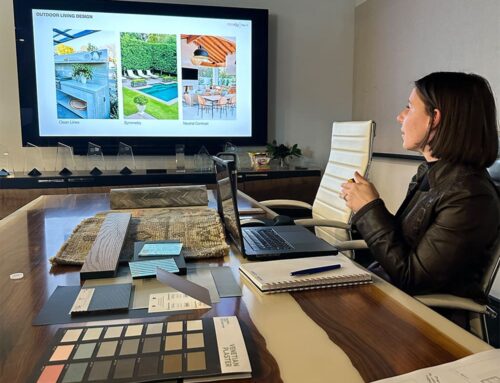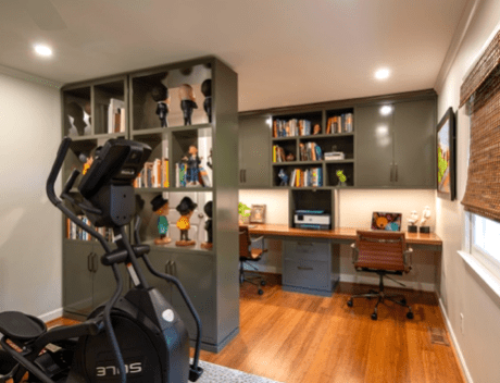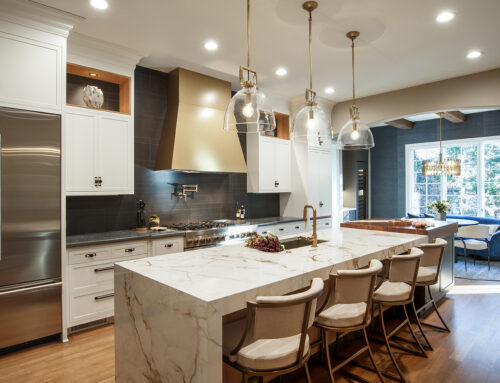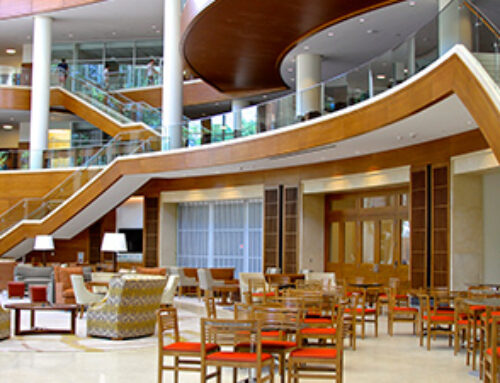In interior design, lighting is not just about brightness; it’s about creating a mood, enhancing functionality, and highlighting the beauty of a space. A well-lit room typically incorporates three key layers of lighting: ambient, task, and accent. Understanding and integrating these layers can transform a residential space into a cohesive, functional, and aesthetically pleasing environment.
Ambient Lighting
 Ambient lighting, also known as general lighting, is the primary source of light in a room. Its purpose is to provide a uniform level of illumination that ensures safe and comfortable movement within the space. This type of lighting often comes from ceiling fixtures such as chandeliers, recessed lights, or flush-mount fixtures. In addition to overhead lights, wall-mounted fixtures like sconces can contribute to ambient lighting, especially in hallways and staircases.
Ambient lighting, also known as general lighting, is the primary source of light in a room. Its purpose is to provide a uniform level of illumination that ensures safe and comfortable movement within the space. This type of lighting often comes from ceiling fixtures such as chandeliers, recessed lights, or flush-mount fixtures. In addition to overhead lights, wall-mounted fixtures like sconces can contribute to ambient lighting, especially in hallways and staircases.
For a balanced and inviting atmosphere, ambient lighting should be soft and diffused, avoiding harsh shadows and glare. Dimmers can be particularly useful in controlling the intensity of ambient light, allowing homeowners to adjust the mood to suit different times of day or activities.
Task Lighting
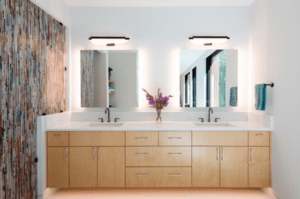 Task lighting is focused on specific areas where activities such as reading, cooking, working, or grooming take place. It is designed to be brighter and more concentrated than ambient lighting to reduce eye strain and improve visibility for detailed tasks.
Task lighting is focused on specific areas where activities such as reading, cooking, working, or grooming take place. It is designed to be brighter and more concentrated than ambient lighting to reduce eye strain and improve visibility for detailed tasks.
Common examples of task lighting include:
- Under-Cabinet Lighting: In kitchens, this lighting illuminates countertops for food preparation and cooking, making it easier to see what you’re doing.
- Desk Lamps: Ideal for home offices or study areas, these lamps provide direct light for reading, writing, and computer work.
- Vanity Lights: Positioned around bathroom mirrors, these lights ensure even illumination for grooming tasks such as shaving or applying makeup.
- Reading Lamps: Often placed by beds or in living areas, they provide focused light for reading without disturbing the rest of the room’s ambiance.
Accent Lighting
 Accent lighting is used to highlight specific features within a room, such as artwork, architectural details, or decorative objects. This type of lighting adds drama and visual interest, creating focal points and enhancing the overall aesthetic appeal of a space.
Accent lighting is used to highlight specific features within a room, such as artwork, architectural details, or decorative objects. This type of lighting adds drama and visual interest, creating focal points and enhancing the overall aesthetic appeal of a space.
Examples of accent lighting include:
- Spotlights: These can be directed towards artwork, sculptures, or other focal points to draw attention and enhance their visual impact.
- Track Lighting: Flexible and adjustable, track lighting can be used to highlight multiple objects or areas within a room.
- Wall Washers: These fixtures spread light evenly across a wall, emphasizing its texture or color and making the space feel larger and more dynamic.
- Recessed Lighting: Often used in niches or alcoves, recessed lights can illuminate architectural features or display shelves subtly and effectively.
Integrating the Layers
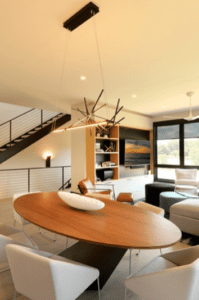 The key to effective lighting design lies in integrating these three layers seamlessly. Here’s how to approach it:
The key to effective lighting design lies in integrating these three layers seamlessly. Here’s how to approach it:
1. Start with Ambient Lighting: Ensure that every room has a sufficient level of general illumination. Consider ceiling fixtures or a combination of recessed lights and wall sconces to create an even distribution of light.
2. Add Task Lighting: Identify areas where specific activities occur and supplement with appropriate task lights. For instance, install under-cabinet lighting in the kitchen, reading lamps in the living room, and desk lamps in the office.
3. Incorporate Accent Lighting: Use accent lights to highlight the room’s features and create points of interest. This could involve spotlighting a piece of art, using wall washers to enhance a textured wall, or adding LED strips to accentuate architectural elements like crown molding or coffered ceilings.
By layering ambient, task, and accent lighting, interior designers can craft spaces that are not only functional but also beautiful and inviting. Each layer serves a distinct purpose, and when combined, they create a dynamic and harmonious environment. Thoughtful lighting design transforms a house into a home, enhancing its ambiance, usability, and aesthetic appeal.


